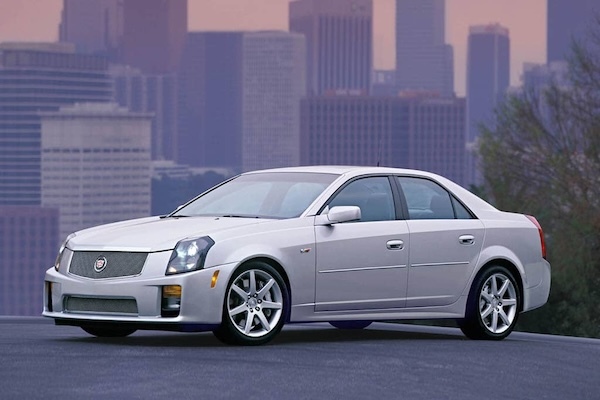Many Europeans perceive Cadillacs as vehicles primarily designed for retirees who prioritize comfort over style and engine performance.
This view was somewhat accurate towards the late '90s when Cadillacs were often likened to oversized, comfortable lounges on wheels.
Yet, Cadillac, aspiring to be the jewel in General Motors' crown, has a storied history of being among the most prestigious and technologically forward car manufacturers globally. Looking for evidence?
Since its founding in 1902, Cadillac was the pioneer in adopting the starter with a lock. By 1911, Cadillacs were equipped with an electric starter. Come 1916, Cadillac introduced the modern dashboard layout, positioning the gearbox and handbrake to the right, with the accelerator, brakes, and clutch in an adjacent arrangement.
Always aiming to lead rather than follow, Cadillac has consistently endeavored to outpace its rivals, especially those from Europe. The Cadillac Fleetwood stands as a testament to Cadillac's commitment to excellence and innovation.
Everything Started With...
At the dawn of the 1940s, the elite of the world were captivated by the exclusive art of custom bodywork. Wealthy individuals sought distinctive automobiles that set them apart from the masses. Hence, they turned to specialized workshops to commission bespoke bodyworks without parallels.
Seizing this trend, Cadillac decided to launch a series of exceptional models under the Fleetwood line. The core idea was to produce unique, limited edition vehicles that could meet the most demanding tastes and preferences.
The unveiling of the first Fleetwood series coincided with the onset of the Great Depression, the monumental economic downturn that lasted from 1929 to 1933, affecting industries worldwide. Given the economic climate, it's understandable that only a limited number of Fleetwood models were produced. Nevertheless, the inaugural Fleetwood set a standard for versatility in luxury, offering a range of body types including sedans, coupés, convertibles, and limousines, all equipped with powerful 8-cylinder engines and carrying the prestigious Fleetwood name.
In the aftermath of the economic downturn, Cadillac, alongside other manufacturers, was compelled to meticulously strategize their financial allocations. This necessity partly motivated the decision to designate certain models, specifically the Sixty Special and the Series 70, with the Fleetwood name—a move that was cost-effective and advantageous.
General Motors maintained this strategy for decades, applying the Fleetwood moniker to denote a higher level of equipment and luxury from 1935 to 1986. Throughout this span, only a select few models were deemed deserving of the Fleetwood badge, most notably the Cadillac Fleetwood Limousine and the Cadillac Fleetwood Brougham.
A Painful Fall
In 1985, Cadillac reintroduced a venerable, yet to many of the era's generation, obscure name—Fleetwood.
This time, General Motors opted to adorn a mid-sized sedan's trunk with the storied Fleetwood emblem. Was this decision prudent? From an economic perspective, it was nearly flawless. Yet, it simultaneously bordered on the tragic.
The primary challenge facing Fleetwood models at the time was their performance, which was more akin to that of compact cars despite being equipped with powerful 8-cylinder engines capable of exceeding 200 HP. For a vehicle stretching 5 meters in length, the difficulty of maneuvering and overtaking on the road could indeed be a cumbersome experience.
In 1993, after nearly a decade, General Motors made a strategic pivot, reserving the Fleetwood name exclusively for models with rear-wheel drive. This move not only marked a return to form but also provided the financial impetus needed for Cadillac to embark on the development of new vehicles.
Embodying the essence of General Motors' innovation, the Fleetwood sedan boasted an array of features that were state-of-the-art at the time. It featured an electronic dashboard, a four-speed (!) automatic transmission, climate control, leather upholstery, and nearly all electronic devices. While these features might seem modest by today's standards, they represented a significant advancement, rivaling those of European luxury cars, with the exception perhaps of the S class Mercedes-Benz, where such amenities were more commonly found.
The executives at General Motors aspired for the Fleetwood name to epitomize the pinnacle of luxury. However, the prevailing notion of luxury among consumers at the time equated opulence with the sheer size and heft of a vehicle. This led to the creation of a vehicle reminiscent of a land yacht, stretching an imposing 5.7 meters in length and powered by a 5.7-liter engine (boasting 260 HP) derived from the Chevrolet Corvette. While initially striking in appearance, its impressiveness tended to wane after the first few minutes.
The sedan, with its brief production run, eventually succumbed to the surging popularity of SUVs. General Motors recognized the shifting market dynamics and concluded that continuing to produce luxury sedans for a niche market of roughly 15,000 buyers was unjustifiable.
By 1997, the production of the Fleetwood was definitively halted, marking the end of an era with no prospects for revival. That same year, General Motors also phased out all sedans that shared standard components, shifting focus instead to the increasingly sought-after Chevrolet Suburban and the Chevrolet Tahoe, aligning with consumer preferences for larger, more versatile vehicles.
---
Discover your dream car within our Car Categories, or explore our Classic Passion Shop to uncover thrilling items from our associates!





















